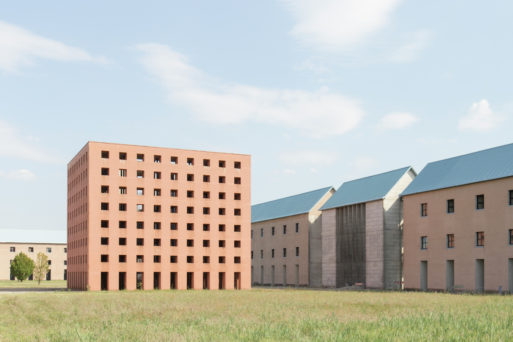
Ossuary Cube in San Cataldo Cemetery
Credit: Laurian Ghinitoiu
As the Modernist school of architecture emerged in the early 20th century, the world almost simultaneously fell into a period of conflict and uncertainty that would endure through the Great Depression and two world wars. As we emerged from this tumultuous period in history, the prominence and popularity of Modernist architecture grew by leaps and bounds, especially as a common style for corporate and institutional buildings. This movement yielded some of the most notable buildings ever created; among them Frank Lloyd Wright’s Guggenheim Museum and Wallace Harrison’s Metropolitan Opera House.
Rejecting Modernism and the Postmodernist Movement
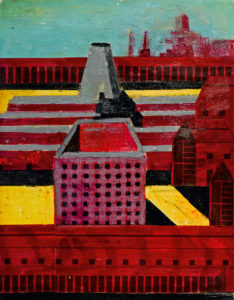
Developmental Drawing
Credit: Aldo Rossi Foundation
As Modernist architecture became more common, however, some designers and planners became disillusioned with its focus on function over form and the apparent disregard many Modernist architects showed for the history and context of the cities in which they were building. To many, the muted colors and minimalism unduly catered to individuality in contexts where what mattered most was the interest of the polis at large.
This led to the rise of the Postmodernist movement in architecture and a return to forms more reminiscent of classical styles and more “respectful” of the cultures and the cities surrounding their creations.
Enter Aldo Rossi (1931 – 1997) and his San Cataldo Cemetery in Modena, Italy. After winning a design contest to build the cemetery, Rossi designed the project while recovering from a car accident in 1971, and his creation is considered one of the most important Postmodern designs ever created.
Architecture in Context
In his 1966 text Architecture of the City, in which he stated that architecture should be embedded within the existing fabric of the city, Rossi advocated for buildings that echoed Classical and Neoclassical forms, as well as a break from the dominance of the gray of Modernism. In his design for the cemetery, he successfully sought to echo the building’s surroundings; his design is reminiscent of local factories surrounding the cemetery, as well as the adjacent Neoclassical cemetery.
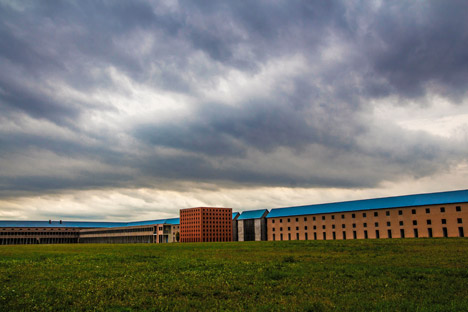
Credit: Massimo Alberici
The Seed of Postmodernism
Consisting mainly of a courtyard defined by a perimeter of pale buildings with almost sky-blue roofs, the design features a large, cubical ossuary rendered in rich terra cotta. The structures are devoid of ornamentation and utilize simplicity and repetitiveness in their facades; elements that, along with Rossi’s choice of color palette, would go on to be considered fundamentals of Postmodernism.
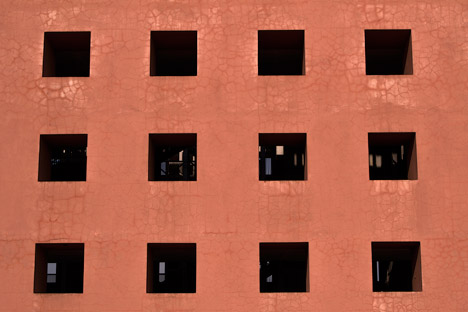
Credit: Maria Lucia Lusetti and Paolo Tedeschi
Rossi’s ossuary has no doors, no windows, and no roof; with interior balcony walkways reminiscent of industrial catwalks. It does have a kind of austerity that it owes to Modernism which blends well with Neoclassical repetition – making it a good example of the transition away from Modernism and toward a more unified city architecture.
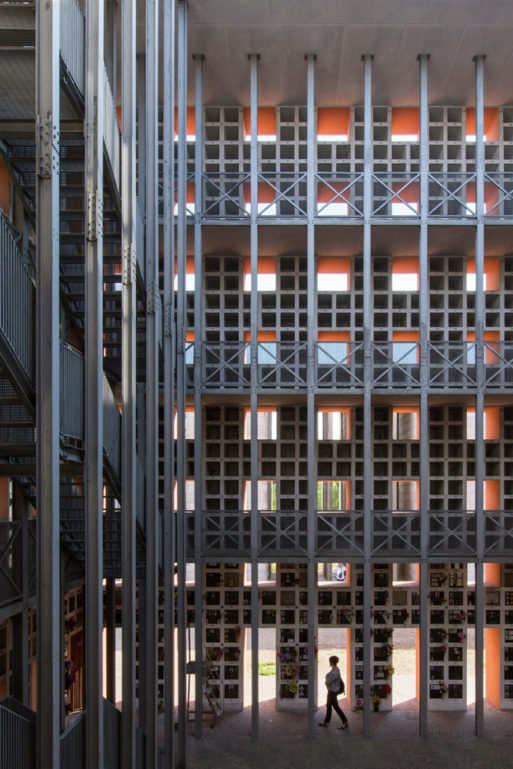
Inside the ossuary
Credit: Laurian Ghinitoiu
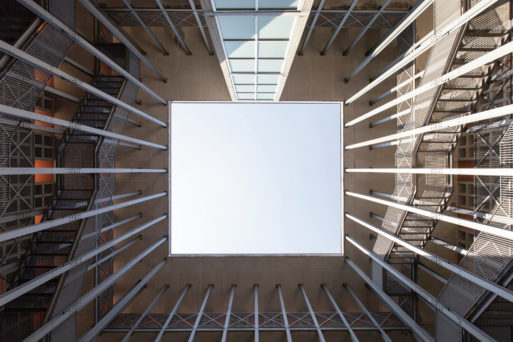
Open roof of the ossuary
Credit: Laurian Ghinitoiu
It’s notable that Rossi’s design was never completed, the most obvious missing feature being a large, conical tower. Maybe it’s fitting, also, that such an important, transitional piece of work has never been fully realized; it was groundbreaking and influential in ways that would inspire others and feed the fires of creativity that forged much of today’s most noteworthy architecture. It’s like a theorem that exposes a new scientific discipline, and as such has a life of its own. It’s a design for both the dead and the living.

 Aldo Rossi’s Postmodern San Cataldo Cemetery
Aldo Rossi’s Postmodern San Cataldo Cemetery


 John Mulaney’s “Funeral Planning” on Netflix: No Real Plan
John Mulaney’s “Funeral Planning” on Netflix: No Real Plan

 Composting Bodies Is Now Legal in a Dozen States
Composting Bodies Is Now Legal in a Dozen States














